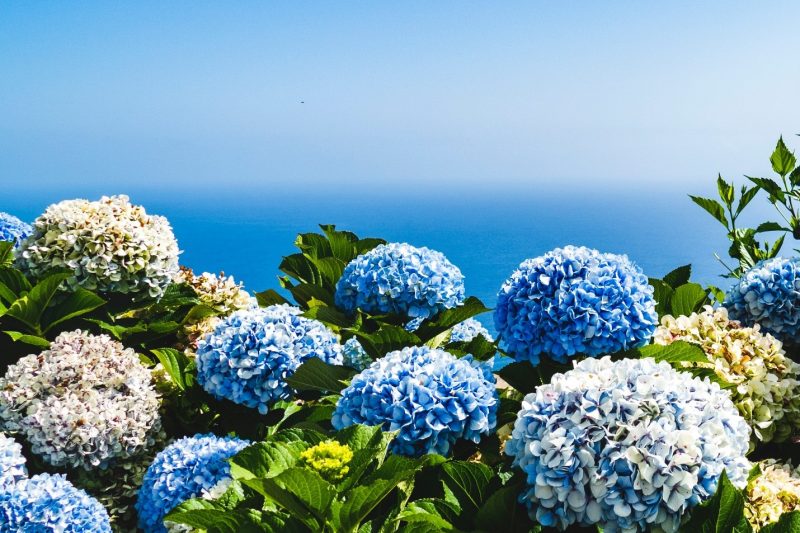
Do you ever just stop in your tracks when you pass a huge cluster of colorful flowers covering the whole garden on your way, just to turn around and admire their beauty wholeheartedly? Are you someone who just loves filler flowers? Guess what, hydrangeas cast a spell on a huge amount of people around the world that there is even a society only for hydrangea lovers in America. Impressive, isn’t it?
Meaning
Grace & Gratitude
Ancient Greek has a lot to do with flowers whether it’s their name or mythologies or remedies. Hydrangea is a combination of the Greek words “Hydor” and “Angos” meaning “water vessel”. It fits them perfectly as hydrangeas are very thirsty flowers. However, at that time, this name was given to them due to the shape of their seeds which looks like cups.
Other meanings include:
- Pink hydrangea means sincerity and love.
- Blue hydrangea means understanding, gratitude, and forgiveness.
- Purple hydrangea means royalty and pride.
- White hydrangea means vanity and grace.
- In Victorian times, hydrangeas were associated with arrogance and boastfulness due to multiple famous stories.
Season
Early Spring to Late Autumn
Facts
- Hydrangeas are native to North America, however, they grow everywhere. Furthermore, they were discovered in Japan.
- Giving pink hydrangeas in Asia will give them the message that “they are the beat of your heart.”
- You can choose the color of the flower by messing with the aluminum ions in the soil.
- The main cluster of hydrangeas is produced from the tips of shoots from the previous bloom.
- Hydrangea lovers celebrate hydrangea day on the 5th of January every year.
Benefits of Hydrangea Roots
- Hydrangea roots may be used as protection from kidney and liver damage.
- It may work as an antioxidant and anti-inflammatory.
- Hydrangea roots may help lower blood sugar levels.
- It may enlighten the body with cancer-fighting properties.
- It may help in reducing an enlarged prostate.
- Hydrangea roots may prevent bladder infections and cystitis.
- It may help dissolve gallbladder and kidney stones.
- It may soothe pain in inflamed tissues, gout, and rheumatoid arthritis.
- Hydrangea roots may help strengthen the immune system.
Note that these are the benefits of Hydrangea roots only as other parts of hydrangea are poisonous.
Toxicity
Even though hydrangeas do not cause huge trouble but with the presence of glycoside amygdalin, it would be a lie to say it is not poisonous. Plant them in a place that is out of the reach of children and pets as after the consumption of a specific amount of hydrangea’s flowers and leaves, it can produce cyanide in our body stopping the cells of our body from consuming oxygen resulting in them to die. This will cause great and immediate damage to the heart and brain, in many cases causing death.
How to Grow Hydrangeas
For hydrangeas to thrive to their maximum, plant them 4 feet apart from each other and in a hole with the depth same as the root balls and twice as wide. Make sure the soil is well-drained and fertile and is in a shady spot with not too harsh sunlight. The pH level of soil will decide the color of the flower. Acidic soil will result in blue blooms while an alkaline soil will give pink flowers. Water your hydrangeas at least an inch per week.